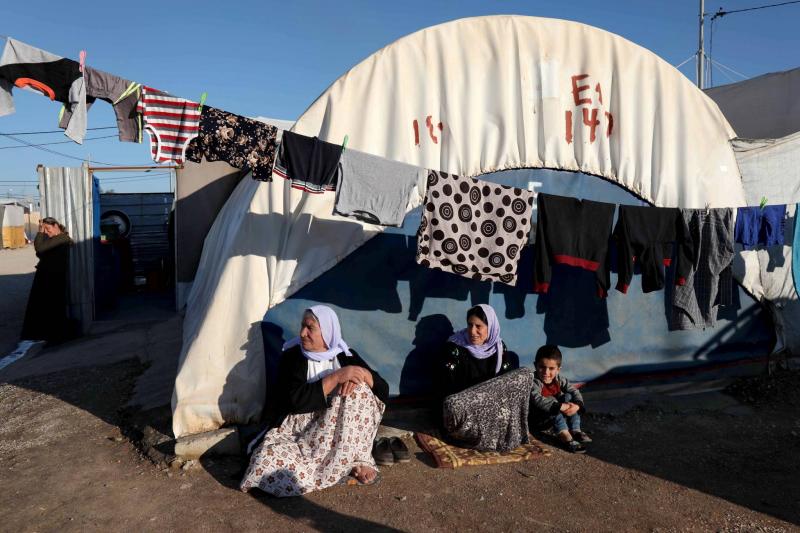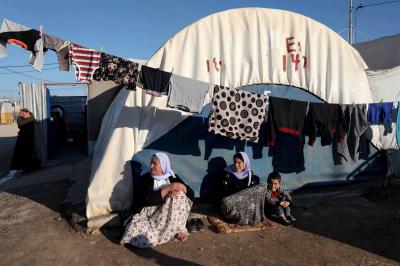Fahd Qasim was eleven years old when he was captured by ISIS militants during an attack on the Yazidis in the Sinjar region of northern Iraq in August 2014. This attack marked the beginning of a systematic campaign of killing, slavery, and rape against thousands of Yazidis, shocking the world and displacing most of this religious minority, which numbers around 550,000. Thousands were captured and killed in the initial attack, which began in the early hours of August 3rd. It is believed that many others died in captivity. Survivors fled to the slopes of Mount Sinjar where some remained for weeks due to a siege imposed by ISIS.
The militant group's assault on the Yazidis, an ancient religious minority residing in eastern Syria and northwestern Iraq, draws from beliefs rooted in Zoroastrianism, Manichaeism, Judaism, Christianity, and Islam, was part of its efforts to establish a caliphate. At one point, the organization controlled a third of Iraq and Syria before being defeated by U.S.-backed forces and Iran-supported factions, culminating in its collapse in 2019.
Qasim, now twenty-one years old, lives in a small apartment on the outskirts of a refugee camp in Iraqi Kurdistan, far from his hometown. Trained as a child to be a soldier, he fought fierce battles before being liberated with the collapse of ISIS in Baghouz, Syria, in 2019; however, he had lost the lower part of his leg in a U.S.-led airstrike. He said, “I prefer to leave Iraq,” explaining that he is waiting for news about a visa application to a Western country. He added, “After the suffering we experienced, it is impossible to stay in a place where all this happened in 2014.” He clarified that "those returning say they are afraid of experiencing the same thing that happened in 2014 again."
Many share Qasim's reluctance to return. Ten years after what has been described by many governments and UN agencies as genocide, Sinjar remains largely devastated. The old city of Sinjar consists of heaps of gray and brown stones, while places like the village of Kocho, where hundreds were killed, have turned into crumbling ghost towns. The limited services, poor electricity and water supplies, and residents’ complaints about insufficient government compensation for reconstruction complicate the return.
Power struggles further complicate the situation, with several armed groups that fought to liberate Sinjar still entrenched in this strategic corner of Iraq, wielding effective control on the ground. This is in spite of the Sinjar Agreement of 2020, which called for such groups to leave and for a mayor to be appointed and a local police force to be formed. Turkey continues to launch repeated drone strikes against fighters allied with the banned Kurdistan Workers' Party (PKK), resulting in civilian casualties that enhance the feelings of insecurity.
Akhtin Intiqam (25), a leader of the Sinjar Protection Units affiliated with the PKK, defended their continued presence in the area, saying, “We control this area, and we are responsible for protecting Sinjar from all external attacks.” Speaking from a room decorated with pictures of her colleagues who were killed—over 150—Akhtin expressed doubt about the Sinjar Agreement. “We will fight with all our strength against anyone who tries to implement this plan. It will never succeed.”
With the stalemate ongoing, Sinjar suffers from a lack of any type of development. Returnees receive approximately three thousand dollars from the government as a one-time payment. More than 200,000 Yazidis remain in Kurdistan, many living in dilapidated camps. The Iraqi government seeks to dismantle these camps and insists that the time has come for people to return home. Khalaf Sinjari, an advisor to the Iraqi Prime Minister on Yazidi affairs, said, “You cannot blame people for losing hope. The scale of damage and displacement is colossal, and over the years, nothing significant has been done to address it.”
Sinjari, who is Yazidi, explained that the government is genuinely interested in developing Sinjar. The government plans to spend hundreds of millions of dollars, including budgets that have not been spent since 2014, on development and infrastructure, which includes paying compensation, building two new hospitals, a university, and connecting Sinjar to the national water network for the first time. He added, “There is hope for the return of life.”
However, the presence of an estimated 50,000 ISIS fighters and their families across the border in Syria in detention centers and camps raises fears that history might repeat itself. Additionally, efforts by some Iraqi legislators to pass a general amnesty law could lead to the release of many ISIS-affiliated prisoners from Iraqi jails, fueling these concerns. Efforts by Yazidis to seek justice have also stalled, as this year the government ended a UN mission aimed at helping prosecute ISIS fighters for international crimes, citing a lack of cooperation with the mission.
Despite the challenges, some Yazidis have chosen to return. Farhad Barakat Ali, a Yazidi activist and journalist displaced by ISIS, decided to return several years ago. He stated from his home in Sinjar in sweltering heat due to power outages, “I do not encourage everyone to return to Sinjar, but I also do not encourage them to stay in displacement camps.” He added, “Living in your hometown is something people can take pride in.”




